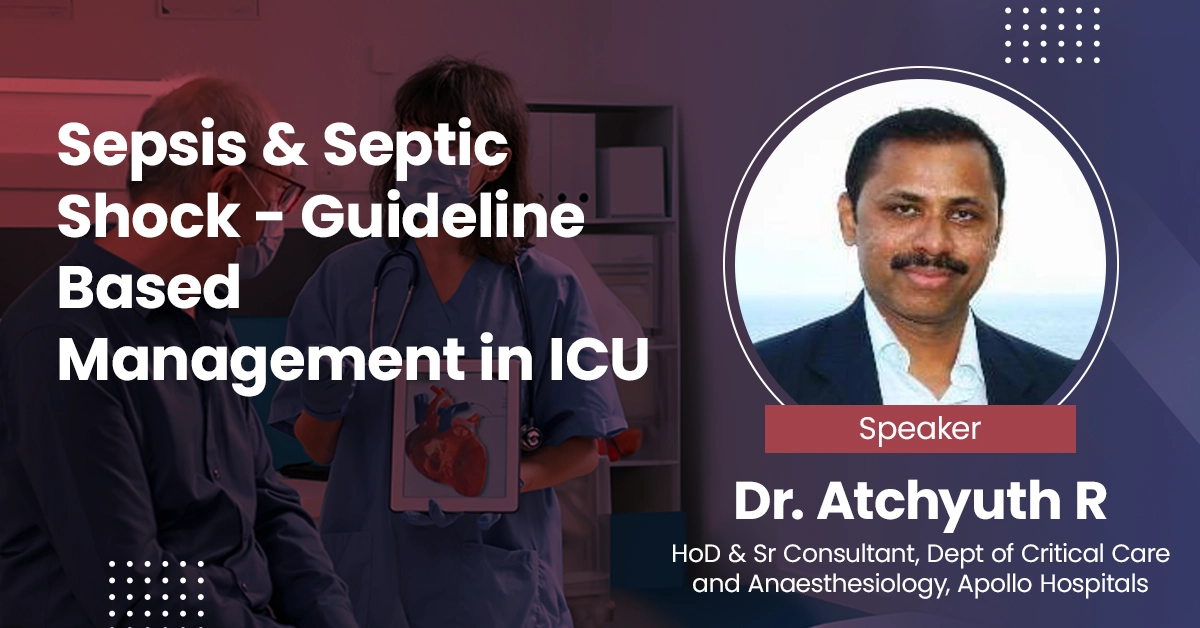- 139.5k views
Sepsis and Septic Shock – Guideline based management in ICU
The body's reaction to infection causes sepsis, a potentially fatal organ malfunction. It needs quick identification, the right drugs, careful hemodynamic support, and infection source control. Understanding sepsis physiology and best practice guidelines is essential because the trend in management is away from protocolized therapy and toward suitable usual care.
About the Speaker

Dr Atchyuth R Gongada
MD FRCA, HoD and Sr Consultant,Dept of Critical Care and Anaesthesiology,Apollo Hospitals, Healtcity, Visakhapatnam
Upcoming Case Discussions
Gynaecologist’s Guide to Ovarian Cancer
Join us for a special webinar on World Ovarian Cancer Day, titled "Gynaecologist’s Guide to Ovarian Cancer." This expert-led session will delve into the latest advancements in early diagnosis, risk stratification, and evidence-based management of ovarian cancer. Tailored for gynecologists and healthcare professionals, the session will also explore real-world case discussions and multidisciplinary treatment approaches. Let’s come together to raise awareness and empower clinicians in the fight against this silent but deadly disease
Massive Transfusion Protocol
Massive Transfusion Protocol (MTP) is a standardized medical procedure activated in cases of severe hemorrhage, typically involving the rapid administration of large volumes of blood products. The goal is to restore circulating volume, maintain hemostasis, and prevent the lethal triad of hypothermia, acidosis, and coagulopathy. MTP usually involves a balanced ratio of packed red blood cells, plasma, and platelets, often in a 1:1:1 ratio. Early activation and coordination among trauma teams, laboratory services, and blood banks are essential for its success.
Sleep Apnea and Daytime Fatigue
Sleep Disorder Breathing is a term for a group of conditions with abnormal breathing patterns during sleep. This affects everyday functioning and well being.There are few types of SDB which include upper airways resistance, hypopnea, apnea, catathrenia and heavy snoring. People suffering with SDB can have daytime symptoms that result in poor sleep also. There can also be sleepiness, depressed mood, irritability and cognitive dysfunction.








